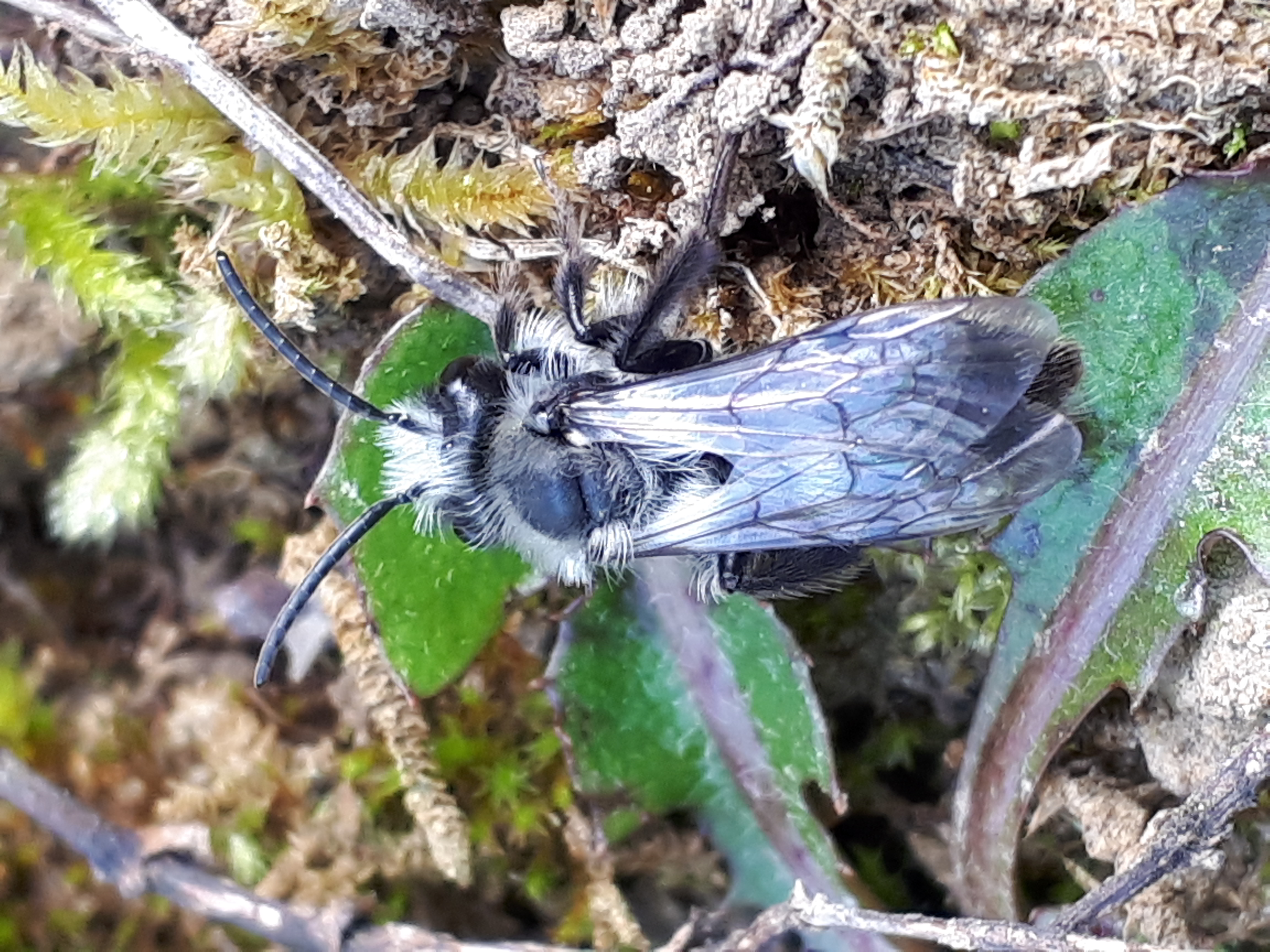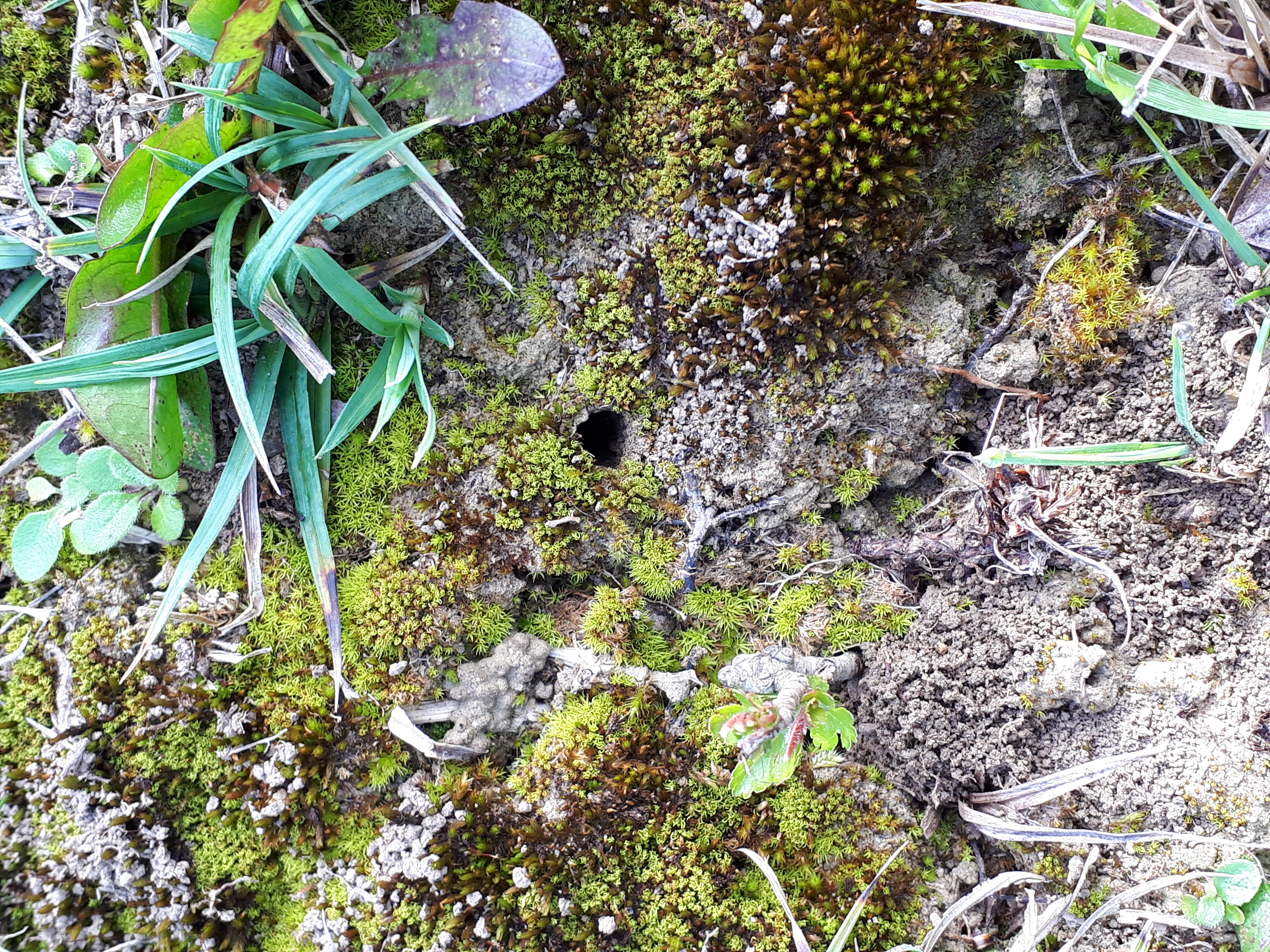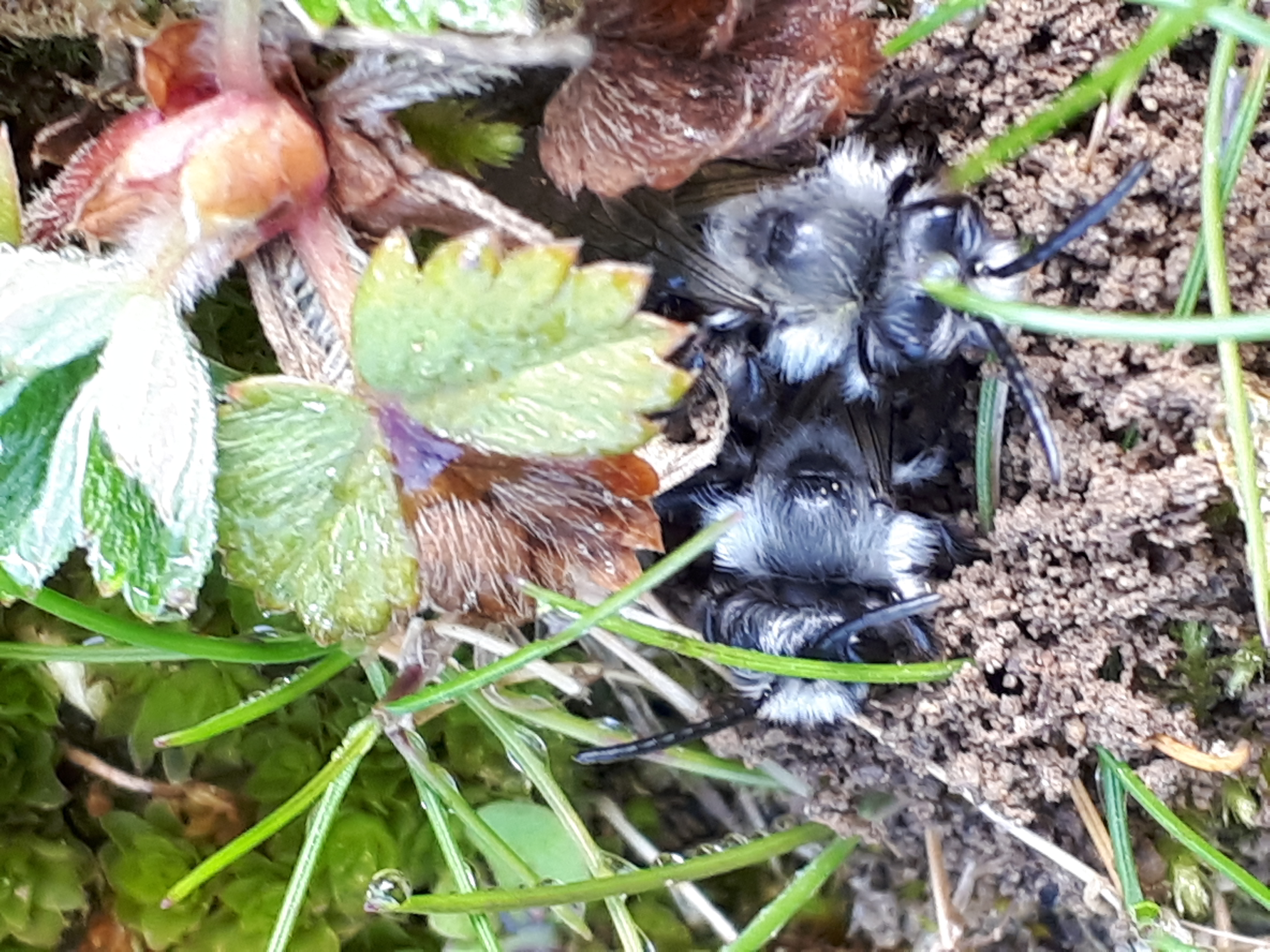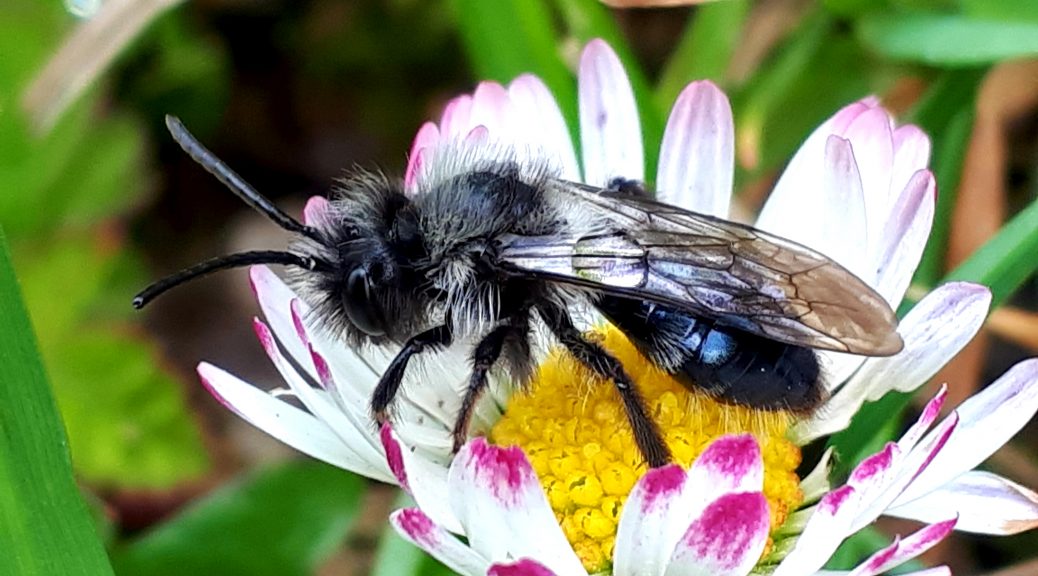
I took the dogs for their usual Sunday walk across the fields; I use the term ‘walk’ loosely for it is more an adventure than a walk. A route of no more than 1km long can sometimes take two hours to cover for all the nature distractions along the way. The two dogs are old now so their pace matches mine, but it wasn’t always thus.
The far side of Greg’s field marks the boundary between the townlands of Bramblestown and Neigham. It’s an overgrown treeline on a large earthen bank with a stream flowing along one side. It stands out for being such a wonderfully rich boundary compared to the other tightly trimmed hedgerows of which Bramblestown has many. Spring has certainly arrived; a couple of chiffchaffs in full song with their ‘chiff-chaff, chiff-chaff’ tune (phonetics are important for in the German speaking world it is ‘zilp-zalp’ and the Dutch ‘tjift-jaf’), and the ‘chakk, chakk’ of a scolding blackcap from a willow, before it too bursts forth into its delightfully rich and energetic song. And from the wings of this natural stage a quiet nasal ‘tweeb’ belies the handsome bullfinch. Willow warblers are a bit late this year as their song has not yet graced Bramblestown. But their arrival is imminent.

Along the earthen bank, between the primroses, are hundreds of small holes; evidence of the nesting activity of the mining bees, a group of Ireland’s solitary bees. Unlike their honey bee relations solitary bees nest individually rather than in colonies. It is hardly solitary, however, for there is such great activity crammed into a relatively small area; their living arrangements are more suburbia than tower block but definitely not splendid isolation. Solitary bees are notoriously difficult to identify, but fortunately most of the bees I saw were the most easily distinguishable species, the Ashy Mining Bee, with its conspicuous grey hairs.

Hundreds were busily flying onto the earthen banks, excavating holes in the friable earth for nests, then depositing stores of pollen for their larvae to eat and survive on before emerging next spring, to start the whole cycle over again. They fly in spring to coincide with flowering fruit trees, of which they are one of the most important pollinators. For these creatures to survive and flourish they need to have suitable nesting habitat and adequate food resources within a relatively small area. They can forage up to 600m from the nest if they have to, but generally would forage much less if food sources are plentiful. Knowing this, it makes me happy that we planted a few wild cherry and apple trees a number of years back, no more than about 300m from their nests as the bee flies. At the time, unbeknownst to me, I was building a relationship with these bees; I provide food for them in the form of blossoms in spring, and they reciprocate by providing me a bounty of apples and cherries in autumn. Mind you, with the cherries, it is those blasted birds the benefit more than I!

